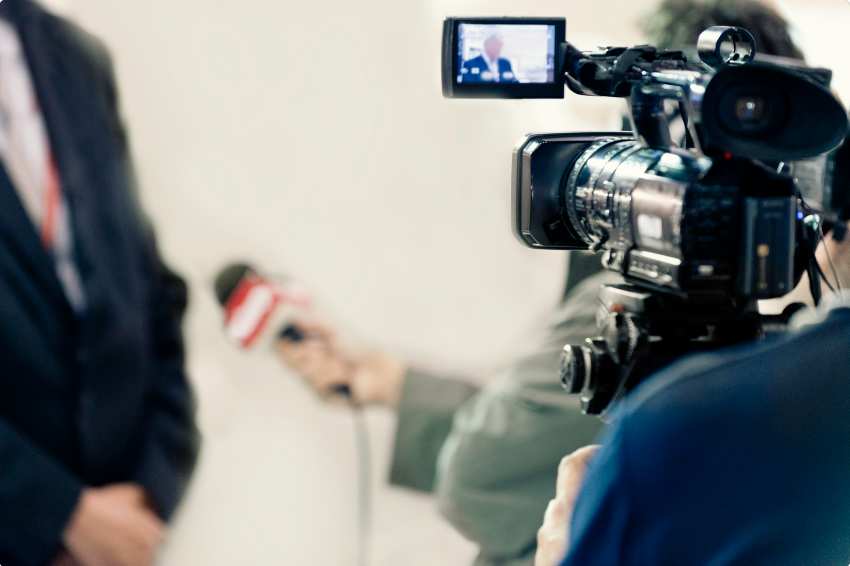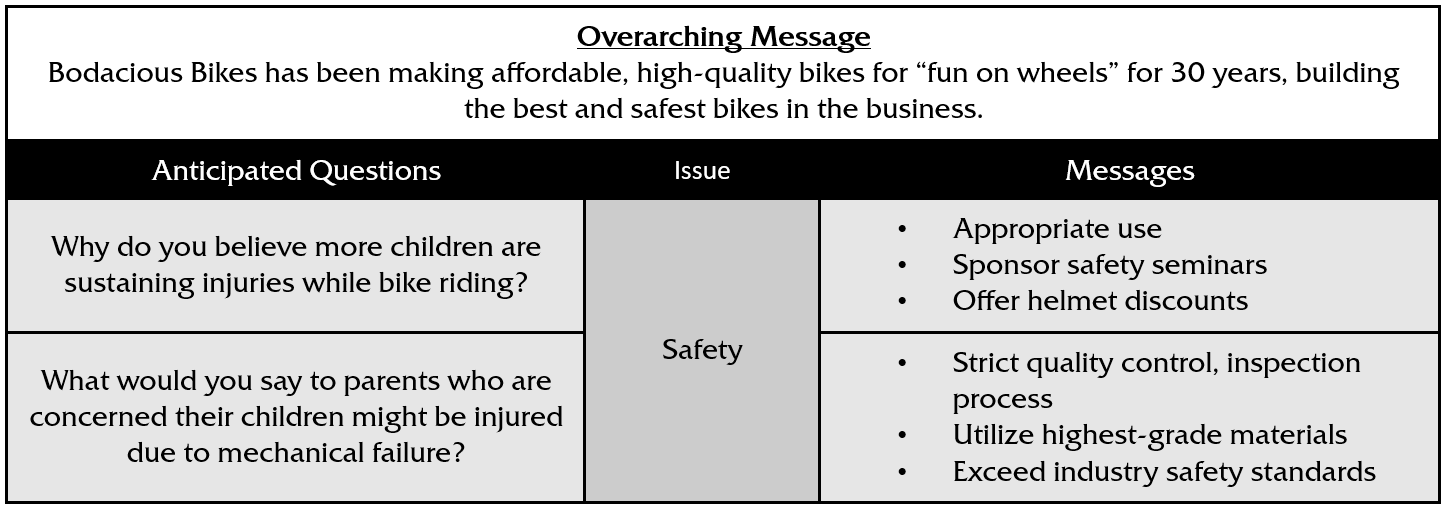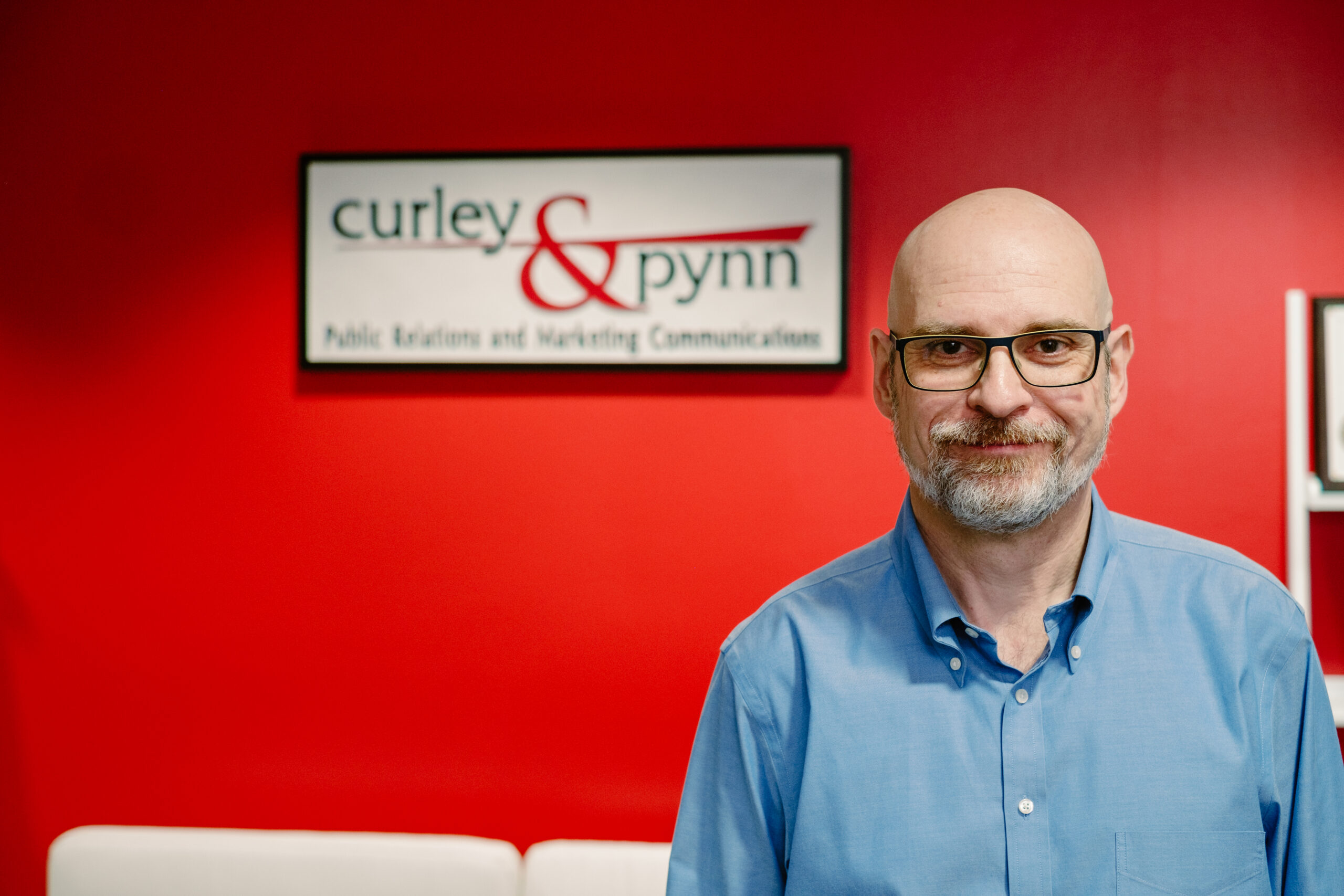Mastering the Message: A Guide for Successful Media Interviews

September 13, 2023
By Kacie Escobar, MBA, APR
As the spokesperson for your organization, your words shape opinions and influence decisions that ultimately determine your company’s reputation. Effective media interviews driven by strategic messaging create opportunities to control the narrative, positioning your company as an industry leader.
Picture this scenario: a microphone is clipped to your lapel, camera poised to capture every expression and a reporter ready to dissect your every syllable. In this pivotal moment, your mastery of the message isn’t just a skill – it’s a game-changer. Welcome to the world of media interviews, where success depends not just on answering questions, but sculpting the narrative that resonates with your team, customers and stakeholders.
In this guide, we delve into the art of not just facing the media, but owning the conversation because, when it comes to successful media interviews, mastering the message is key.
Understanding the Basics of Media Interviews
Media interviews are structured conversations between a company spokesperson and a journalist or reporter, conducted to gather information, opinion or insight on a particular topic for the benefit of the media outlet’s audience. Media may request an interview directly or public relations teams may proactively offer interviews as part of a strategic communications plan.
Formats
While most people think of television, radio, print and online media outlets when they think of interviews, company spokespersons should also be prepared for interviews on new and emerging media, such as podcasts and social media live broadcasts or audio events.
Expectations
The spokesperson is expected to add value to the story by responding to questions and communicating key messages honestly, clearly and concisely. You can also expect certain behavior from interviewers, summarized in Curley & Pynn’s “Interviewee’s Bill of Rights.”
When to Decline
Speaking of rights, you have the right to decline interviews that don’t align with your communications objectives. Media interviews are opportunities – not obligations – for leaders to communicate with target audiences and provide expert perspectives on company or industry news. Reasons to decline include:
- Lack of Expertise: If the topic of the interview is outside your area of expertise, declining is wise to avoid speculation or spreading incorrect information.
- Sensitive Timing: During a crisis or legal activity, declining an interview can prevent potentially damaging statements from causing more harm.
- Misaligned Audience: If the media outlet’s audience doesn’t align with your target demographic, decline to avoid wasting resources.
- Unfavorable Context: If the outlet has a history of sensationalism or bias, declining safeguards against misrepresentation.
Building Confidence Through Media Interview Preparation
Once you’ve agreed to an interview, it’s time to prepare. There are no “do overs” in media interviews. Even the most seasoned spokespersons benefit from interview preparation to boost confidence and plan for the unexpected.
Do Your Research
Start by understanding the topic of the interview and what the reporter or journalist hopes to achieve in the conversation. Spokespersons should also research:
- Story Context: Format and audience demographics of the media outlet, when the story will be published and who else will be quoted.
- Interview Environment: Background on the reporter or journalist, such as their storytelling beat and reporting style, where the interview will take place and approximately how long the interview will last.
Arming yourself with this knowledge is the first step toward making the most out of a media interview and maximizing the impact of your message. Now, you can tailor your core messages effectively, anticipate tough or unexpected questions, and gain the confidence to speak more authoritatively.
Craft Your Core Messages
In the spotlight of a media interview, every word you speak is an opportunity to shape perception. Carefully constructing your message platform beforehand will equip you to guide the conversation toward topics that matter most to your company. This proactive approach allows you to navigate potentially challenging questions while consistently steering the dialogue back to your core talking points. Message development also enables consistency across interviews and interactions. Whether you’re speaking to television hosts, podcasters or print journalists, a well-crafted set of messages ensures that your company narrative remains cohesive and impactful.
Ditch the Q&A
Many spokespersons prepare for interviews by first creating a list of all the questions they anticipate being asked during the conversation and develop messages in response to the list. In this scenario, the interview is interpreted as a demand for answers and success is dictated by your ability to accurately anticipate all the questions you might be asked.
Instead, we recommend listing the issues or categories relevant to your company’s mission, values, strategic priorities and key ideas related to the interview topic, and developing a core set of messages for each. You may still anticipate a few key questions, but the list doesn’t have to be exhaustive. This is the process outlined in Curley & Pynn’s Message Matrix® program, through which we teach company leaders and spokespersons not to evade questions, but to capitalize on them using a common (and proven) debate tactic.
Try the Message Matrix®
Consider this fictional example. A recent study showed bike-riding injuries are among the top reasons why children visit the emergency room. You work for a bicycle manufacturer and were asked to participate in an interview about the findings. You’ve decided the interview is a good opportunity to correct misperceptions about bicycle safety and underline the care your company takes to manufacture high-quality bicycles. Rather than develop your core messages to address the countless questions the reporter could ask, you focus on developing core messages by topic. This a simplified version of what your Message Matrix® might look like, prioritizing the topic of safety:

Bridge to Your Core Messages
What happens if the interviewer asks a question that isn’t on the board? Remember: Every question is an opportunity to respond; not an obligation to answer. To handle these questions gracefully and keep the conversation on track to achieve your media interview objectives, respond by bridging back to the core messages you want to deliver. These phrases help:
- “While that’s an interesting perspective, what’s truly important here is…”
- “It’s too early to talk about that, but this is what we do know…”
- “Ultimately, what I’d like to highlight here is…”
- “What I can tell you is…”
- “It’s worth noting that in situations like these, what we often find is…”
- “Our focus is on…”
- “What we’re really excited about is…”
- “That’s a topic we can certainly explore in more detail at another time…”
- “That’s a valid concern and it underscores the importance of our main message, which is…”
- “To put that into perspective, let’s consider the larger context…”
Delivering Your Message with Authority
You prepared diligently for the interview and are ready to seize the opportunity. It’s time to deliver your message, but simply knowing what to say isn’t enough. How you say it is just as important. How you package your message, your body language and how you handle the conversation can build rapport, leading to a more pleasant experience and a more impactful interview.
Package Your Message
Remember that you are the expert in your field and the reporter, who covers a wide range of topics each day, may not necessarily possess the background needed to fully understand your organization or the topic of discussion. While you can’t control the questions asked or how the story will be written, you can package your message in a way that will make it impossible to misinterpret or misrepresent the information.
These pointers can help package your message in a way that resonates:
- Be Brief: Aim to distil your ideas into two or three points to avoid overwhelming the reporter with an overabundance of information. Too much information forces media to decide which facts to use or not use, and they may not pick the ones you’d prefer. Longer interviews often yield less focused stories.
- Illustrate Your Points: Employ anecdotes and energizing language to illustrate your points, making them memorable and digestible for the reporter and their audience. For example, say “this will be a structure unlike anything people have ever seen” instead of “we will build a state-of-the-art building.”
- Stick to the Facts: Refrain from speculation and the use of phrases like “I think” or “I suppose.” If you are asked to speculate on new information, you can request time to review the information and schedule another interview. This will enhance your credibility and maintain the focus of your message.
Watch Your Nonverbal Cues
Experts agree up to 90% of communication is nonverbal. To truly master your message, consider your volume and tone of voice, body language and message structure. These all impact an audience’s perception of your trustworthiness and authority.
We coach spokespersons and company leaders to employ these nonverbal techniques for more impressive and impactful interviews:
- Tone: Whether it’s conveying empathy in a crisis or enthusiasm about an exciting announcement, adjust your tone accordingly to elicit the desired emotional response from your audience.
- Body Language: Be mindful of behaviors such as smiling, eye contact and hand gestures. Positive body language exudes confidence and establishes trust, putting your interviewer and their audience at ease.
- Pacing: Speak slowly to give your interviewer time to digest your response. Avoid the urge to respond instantly when asked a question. Pause to consider the question, show that you take the question seriously and are not just reciting a talking point.
- Attire: If you are on camera, dress in attire that appropriately represents your company culture, and matches the tone and purpose of the interview.
Wrapping Up: Own the Conversation and Champion Your Narrative
Successful media interviews involve far more than simply responding to a list of questions. They require understanding the structure, knowing when to accept or decline an opportunity, conducting thorough research, crafting key messages and delivering them with confidence. With diligent preparation, you can master your message to build trust and enhance your company’s reputation.




